Main Menu
Flyout Menu
Passengers on Amtrak’s Empire Service
along the majestic Hudson River can see seven historic lighthouses
from the train. Hop on board and grab a window seat!
You may consider them a relic. You may view them with nostalgia for early American maritime history. They may stoke your curiosity during a stroll along the Hudson River shore. Or you could become fixated on them while traveling north and south on Amtrak through the Hudson Valley.
They are lighthouses. They are iconic. And in the Hudson Valley they punctuate the waterway known as “America’s First River.” From New York City to the City of Hudson, lighthouses are as much a part of the region as the George Washington Bridge, Catskill Mountains and Albany skyline.
Outside of a ship’s captain or recreational boater on the river, there is probably nobody in a better position to admire the Hudson’s seven lighthouses than an Amtrak passenger. Where the river meets the rails, you can gaze at these waypoints. These modern-day touchstones delineate your trip on the rails as they continue to aid sailors navigating the tides.
Lighthouses date back to ancient Egypt. The first U.S. lighthouse was lit in 1716 in Boston Harbor, according to the U.S. Coast Guard. According to the Hudson River Maritime Museum in Kingston, all lighthouses in the U.S. were run by the United States Lighthouse Service from 1716-1939. The lighthouses — which were often home to U.S. Lighthouse Servicemen with families — were transferred to the United States Coast Guard in 1939.
Passengers on Amtrak’s Empire Service, along the majestic Hudson River, can see the Hudson River’s historic lighthouses from the train. Most of these navigational markers were built to guide mariners on their round–trip journey from New York City to the Erie Canal, the 363–mile waterway that connected the Atlantic Ocean to the Great Lakes. The Erie Canal was completed in 1825, and the first lighthouse began operating the following year.
The Little Red Lighthouse (Jeffery’s Hook Lighthouse)
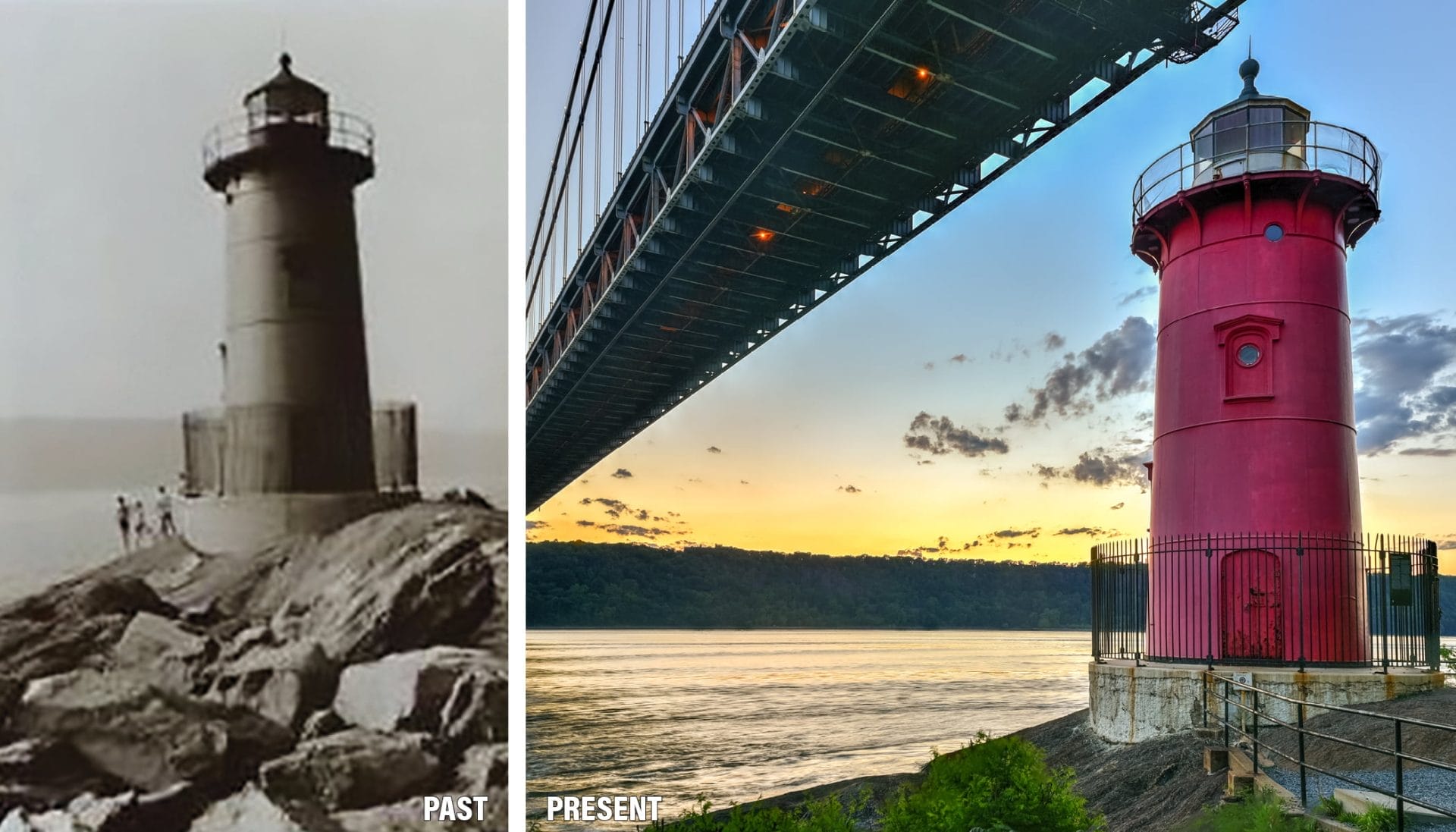
Amtrak riders may not notice this small, 40-foot lighthouse in Fort Washington Park as their train speeds by the George Washington Bridge. However, they might remember it from their childhood, from the book, The Little Red Lighthouse and the Great Gray Bridge.
Located along a dangerous section of the Hudson River once known as Jeffrey’s Hook, The Little Red Lighthouse‘s role as a beacon can be traced to a red pole installed more than a century ago to warn of danger. According to the New York City Parks Department, two 10-candlepower lanterns were placed on the pole in 1889 to aid with navigation. But barge captains in the early 20th century demanded a brighter beacon and The Little Red Lighthouse, originally located on Sandy Hook, New Jersey, was relocated to its current position in 1921.
1883 Lighthouse at Sleepy Hollow
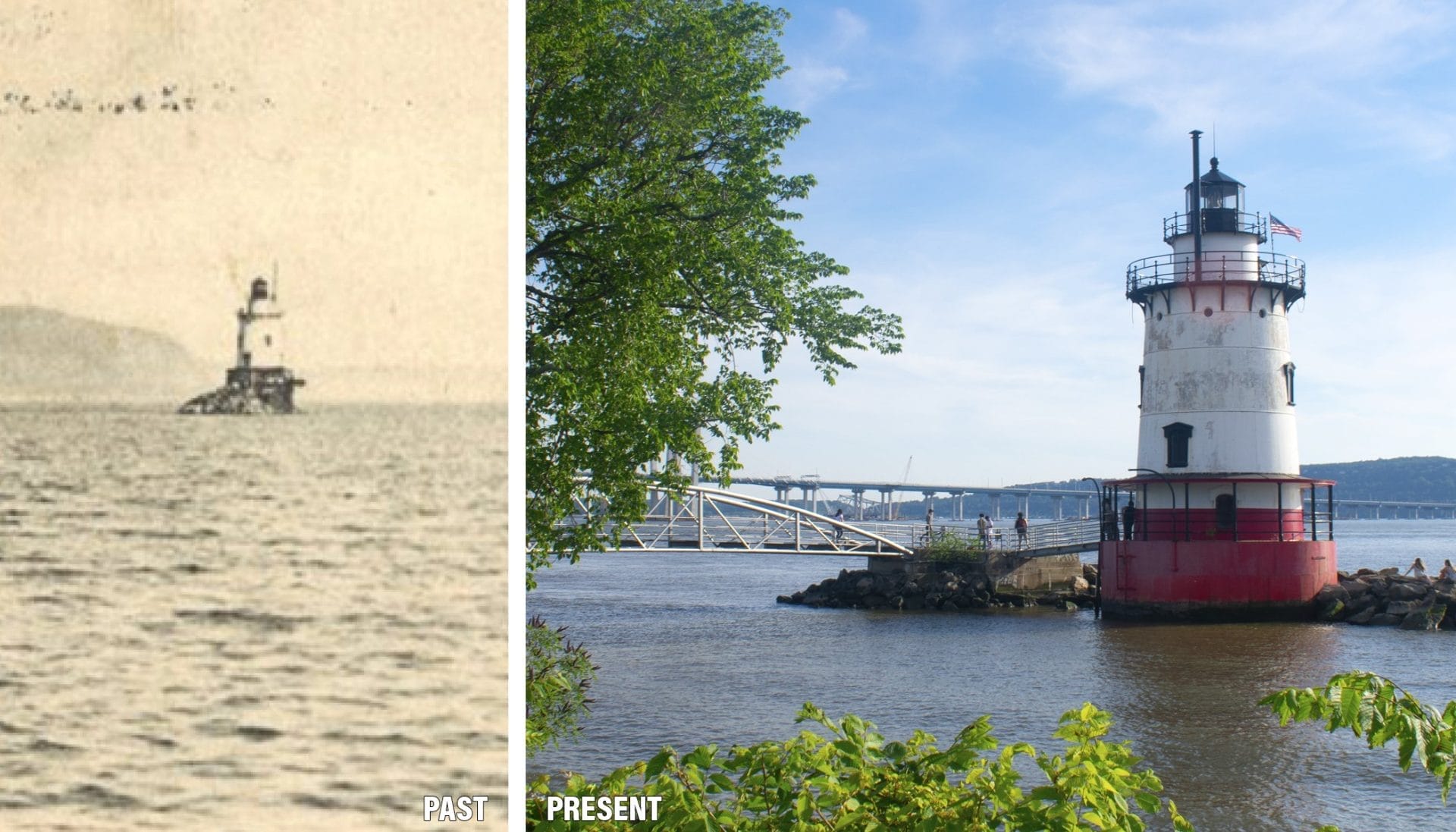
Sometimes called the Tarrytown Lighthouse or Kingsland Point Lighthouse, this five-story lighthouse was once a half-mile offshore, warning ships of dangerous shoals that lay on the eastern shore of the Hudson River. Over the years, landfill from a now-demolished General Motors factory changed the coastline, which in turn, changed the location of the lighthouse, which now sits on the shore. The light was automated in the mid-1950s, but by the 1960s was no longer needed because of navigational lights on the Tappan Zee Bridge (now the Governor Mario M. Cuomo Bridge).
According to visitsleepyhollow.com, the lighthouse’s cast iron tower was installed in 1883. Over the course of its 78 years in operation, 12 light keepers, joined by their families, occupied the navigational structure.
Stony Point Lighthouse
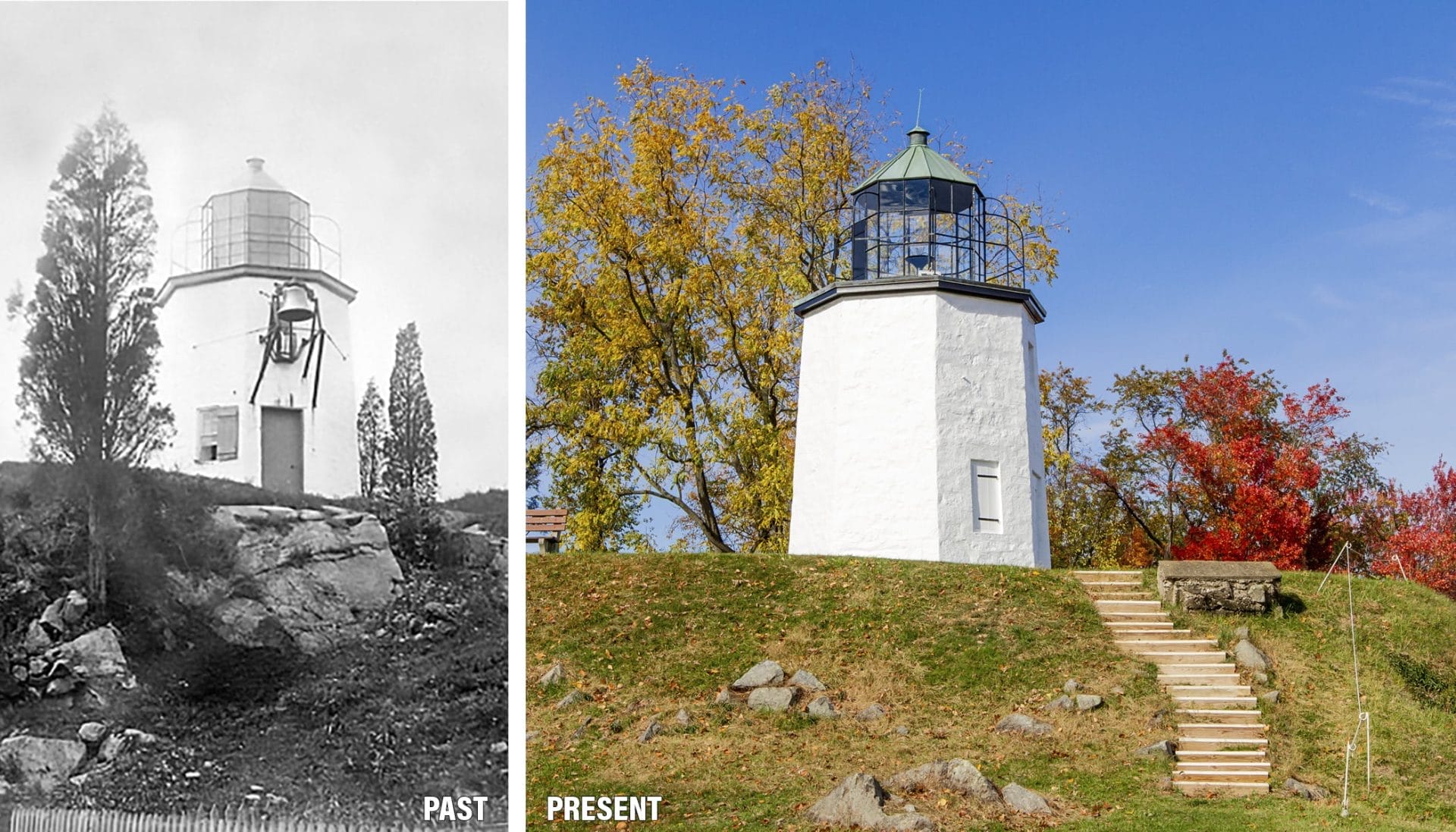
Part of the Stony Point Battlefield State Historic Site, this 30-foot, octagonal lighthouse was the first operational lighthouse on the Hudson River. It was built in 1826, the year after the opening of the Erie Canal, to mark the southern entrance to the Hudson Highlands. Restored in 1995, the Stony Point Lighthouse while operational guided vessels through the narrow pass between Stony Point and Verplanck’s Point until 1925.
According to the Palisades Parks Conservancy, the Stony Point Battlefield was the site of the July 15-16, 1779 Storming of Stony Point by General Anthony Wayne and the Continental Corps of Light Infantry. A brazen midnight assault on British fortifications, this attack resulted in General Wayne’s forces seizing the fort.
Esopus Meadows Lighthouse
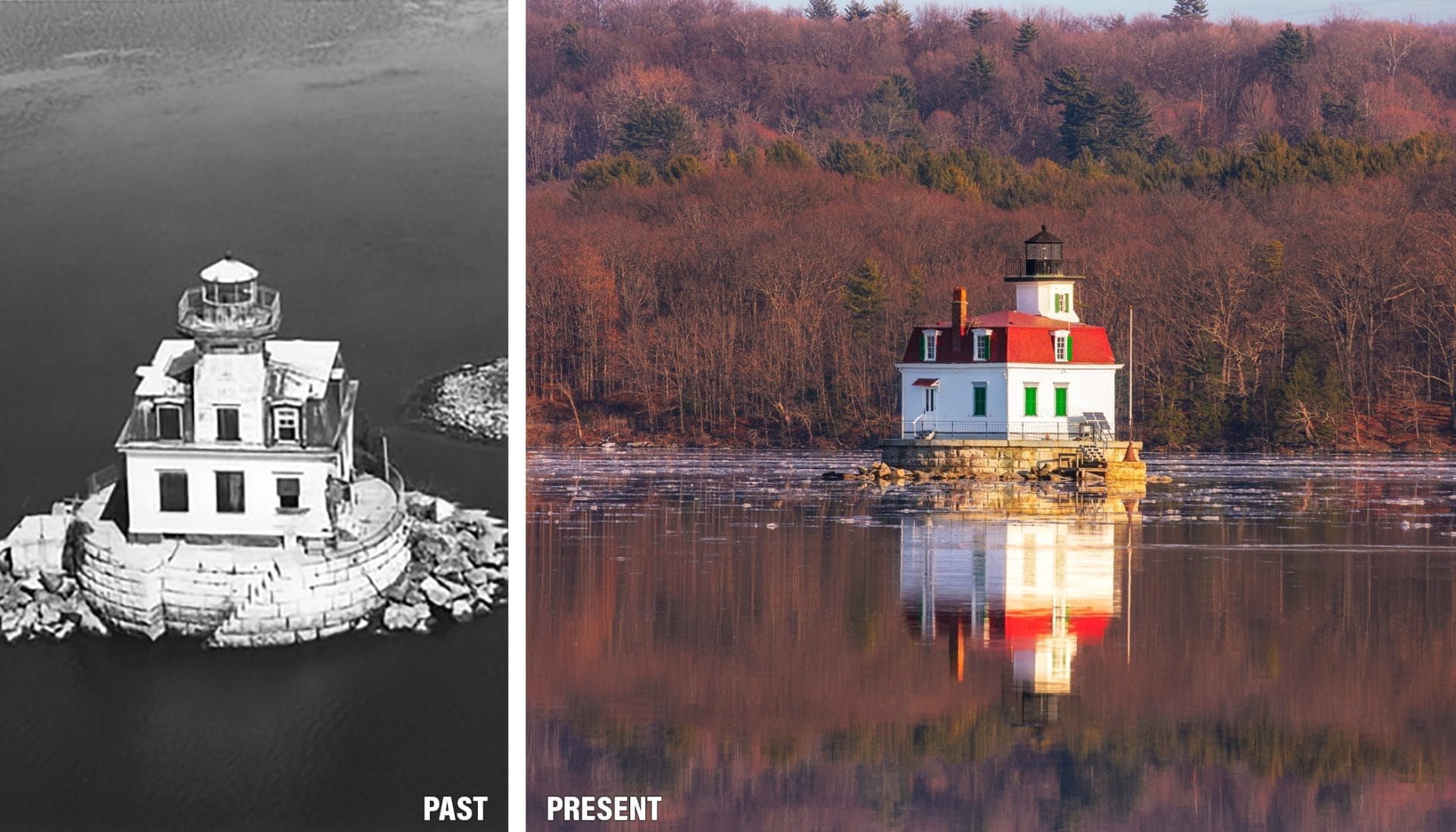
See It from the Train: Between Poughkeepsie (POU) and Rhinecliff (RHI). In the middle of the Hudson River, about 12 miles north of POU.
Location: Port Ewen, NY
Nearest Amtrak Station: Poughkeepsie (POU)
Status: Only accessible by boat. The Hudson River Maritime Museum in Kingston offers tours of both the Rondout Lighthouse and Esopus Meadows Lighthouse, as well as dual lighthouse sightseeing cruises of both. Visitors are transported aboard the solar-powered tour boat Solaris. Call 845-338-0071 or send an email to info@hrmm.org for information.
The only Hudson River lighthouse with a wooden frame and a clapboard exterior, Esopus Meadows Lighthouse is sometimes called the Maid of the Meadow. Completed in 1871, it replaced an earlier lighthouse built in 1839. Its beacon warned boats of mud flats known as the Esopus Meadows, which are located near the western shore of the river. The lighthouse fell into decay over the years but has been restored by preservation groups and is now listed on the National Register of Historic Places.
Rondout Lighthouse
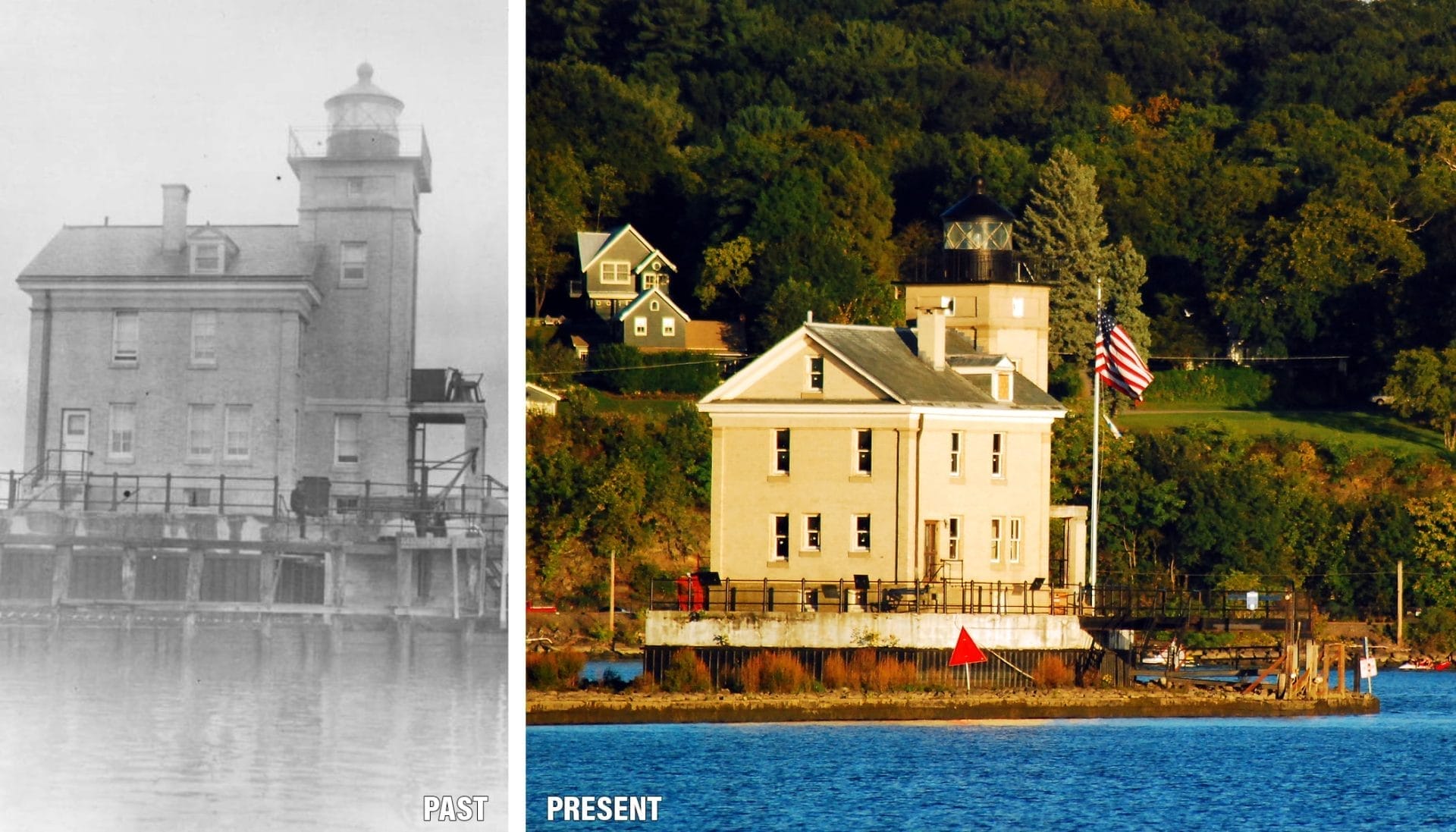
See It from the Train: At Rhinecliff (RHI). Where the Rondout Creek meets the Hudson River.
Location: 50 Rondout Landing, Kingston, NY
Nearest Amtrak Station: Rhinecliff (RHI)
Status: Accessible only by boat. The Hudson River Maritime Museum in Kingston offers tours of both the Rondout Lighthouse and Esopus Meadows Lighthouse, as well as dual lighthouse sightseeing cruises of both. Tours are available from June through September. Visitors are transported aboard the solar-powered tour boat Solaris. Call 845-338-0071 or send an email to info@hrmm.org for information.
This fully operational, brick lighthouse is the last of three lighthouses marking the entrance to the Rondout Creek. Completed in 1915, it’s owned by the City of Kingston and operated by the Hudson River Maritime Museum.
The first lighthouse, built in 1837, was made of wood. Damaged in a storm, it was replaced by a stone structure in 1867. A lighthouse was needed to mark the entrance to the creek because the Rondout section of Kingston was a major deepwater port for most of the 19th and the early 20th century. The opening in 1828 of the D&H canal, which terminated at the Rondout Creek, added to the traffic and importance of this port.
Saugerties Lighthouse
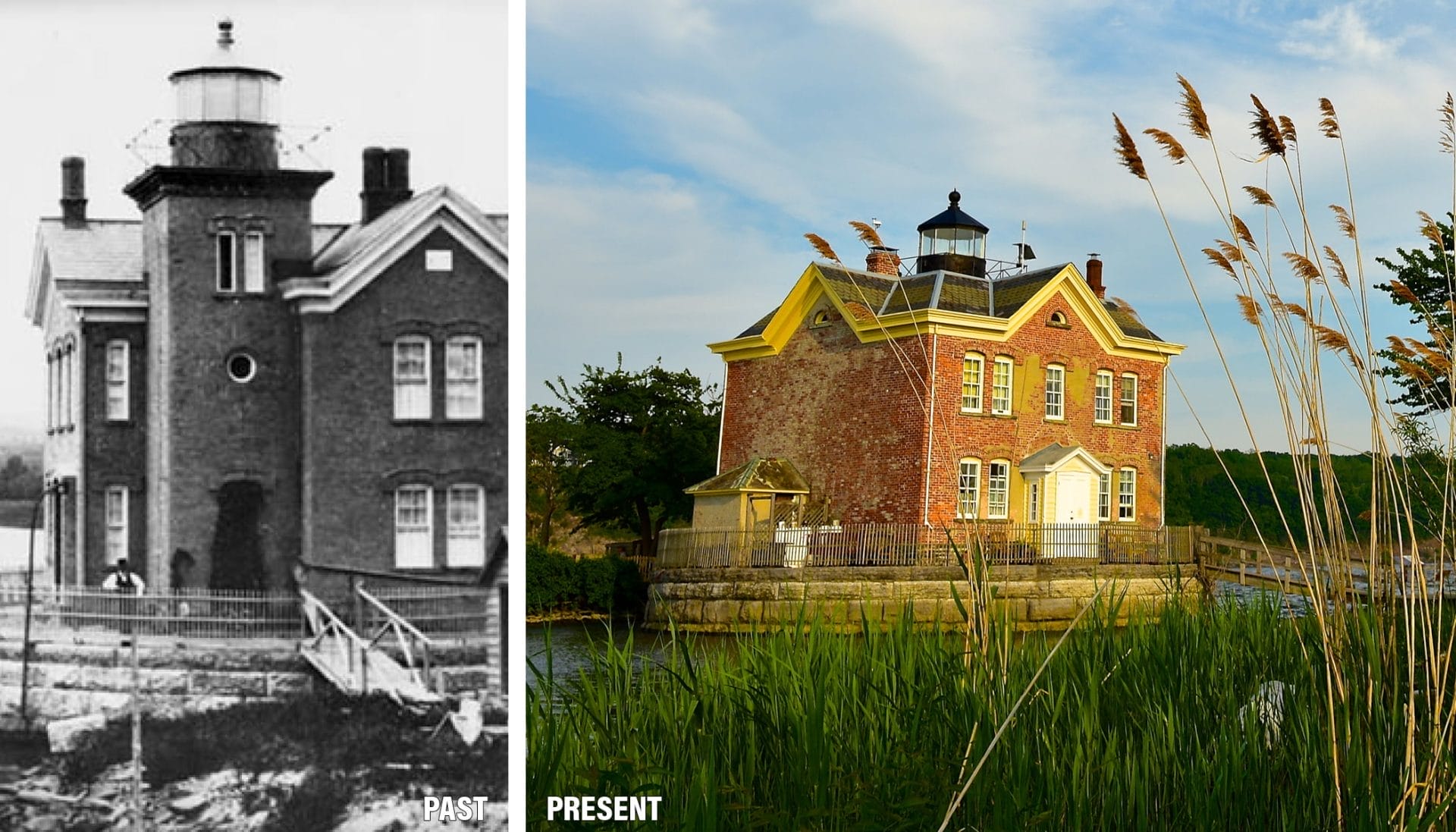
See It from the Train: Between Rhinecliff (RHI) and Hudson (HUD). About 10 miles north of RHI, on the west side of the Hudson River, at the entrance to Esopus Creek
Location: 168 Lighthouse Drive, Saugerties, NY
Nearest Amtrak Station: Rhinecliff (RHI)
Status: Call 845-247-0656 or visit saugertieslighthouse.com for more information.
According to saugertieslighthouse.com, Congress in 1834 appropriated $5,000 for a lighthouse at the mouth of the Esopus Creek at Saugerties. The beacon was needed to guide ships away from nearby shallows and into the Esopus Creek. During this era, Saugerties was a major port for commercial and passenger transportation.
Deactivated in 1954, the lighthouse in 1979 was placed on the National Register of Historic Places. This designation spurred a successful restoration effort and today the lighthouse serves as a charming bed and breakfast, complete with river view rooms and a deck to watch the ships sailing on the Hudson River — and Amtrak trains on the eastern shore. The bed and breakfast is currently open for existing reservations, though no new bookings are being taken this year.
The lighthouse is on the west side of the Hudson River, accessible by a half-mile nature trail.
Hudson-Athens Lighthouse
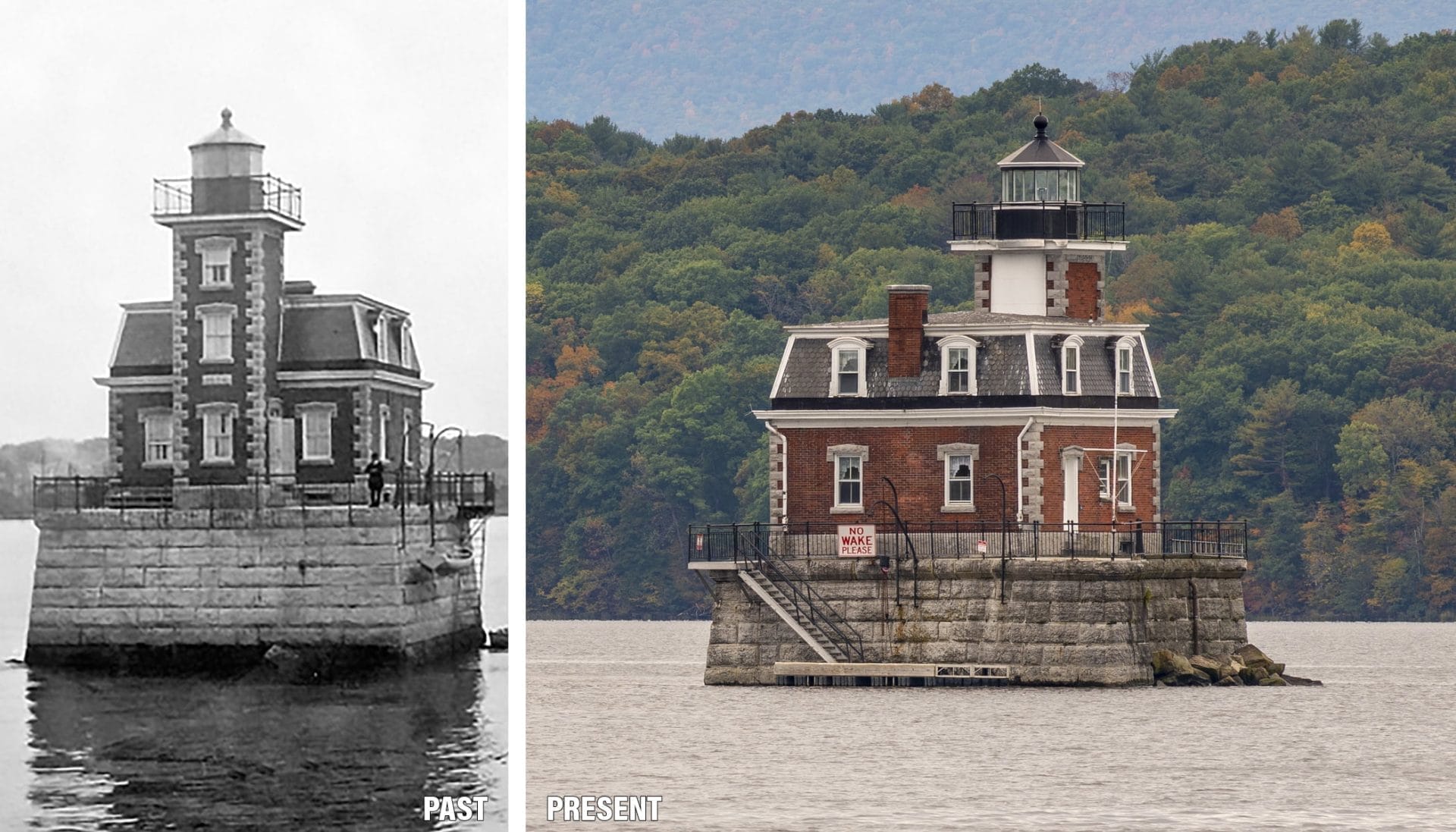
See It from the Train: At Hudson (HUD), in the Hudson River, but closer to the HUD side.
Location: 2 1st St, Water St and 2nd St, Athens, NY
Nearest Amtrak Station: Hudson (HUD)
Status: Send an email to lighthouse@hudsonathenslighthouse.org for information on tours and COVID-19 restrictions.
Congress in 1872 allocated $35,000 for the construction of the Hudson City Lighthouse, now known as the Hudson-Athens Lighthouse. According to hudsonathenslighthouse.org, work began in early 1873, and the lighthouse began operating on November 14, 1874.
During construction, pilings were driven 50-feet into the riverbed and capped by a granite pier, according to hudsonathenslighthouse.org. The north end of the base was shaped like a ship’s prow, to protect the foundation from winter and spring ice floes.
This brick lighthouse, also called the Hudson City Light, marks a sandy ridge in the Hudson River known as Middle Ground Flats, which makes navigation of the Hudson river risky. Still operational, the lighthouse continues to serve as a navigational marker on the river.
The Little Red Lighthouse (Jeffery’s Hook Lighthouse)